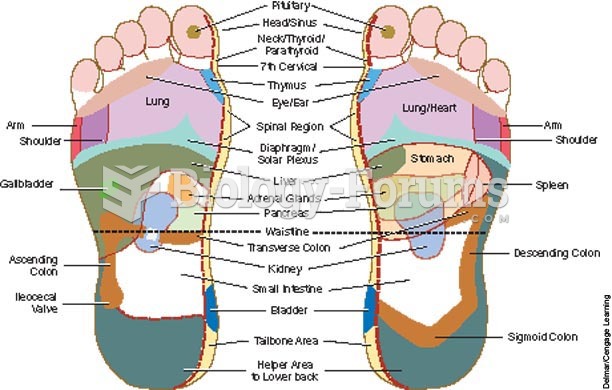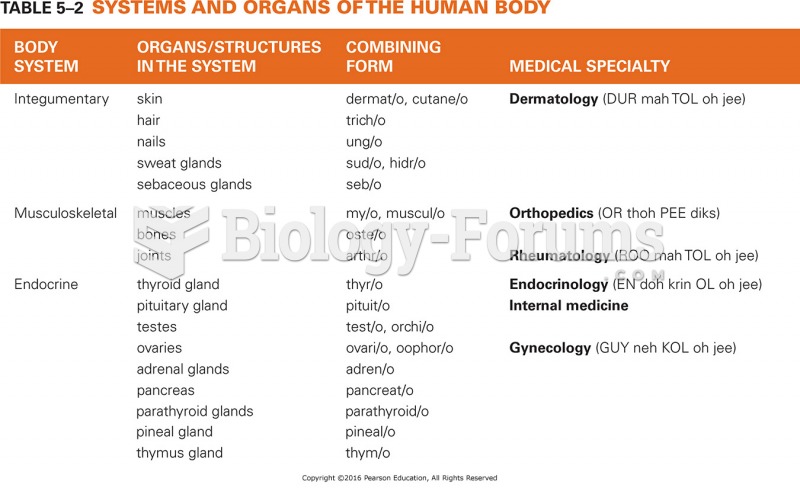|
|
|
Green tea is able to stop the scent of garlic or onion from causing bad breath.
On average, someone in the United States has a stroke about every 40 seconds. This is about 795,000 people per year.
Critical care patients are twice as likely to receive the wrong medication. Of these errors, 20% are life-threatening, and 42% require additional life-sustaining treatments.
There are more sensory neurons in the tongue than in any other part of the body.
Once thought to have neurofibromatosis, Joseph Merrick (also known as "the elephant man") is now, in retrospect, thought by clinical experts to have had Proteus syndrome. This endocrine disease causes continued and abnormal growth of the bones, muscles, skin, and so on and can become completely debilitating with severe deformities occurring anywhere on the body.







